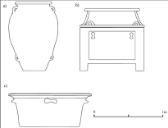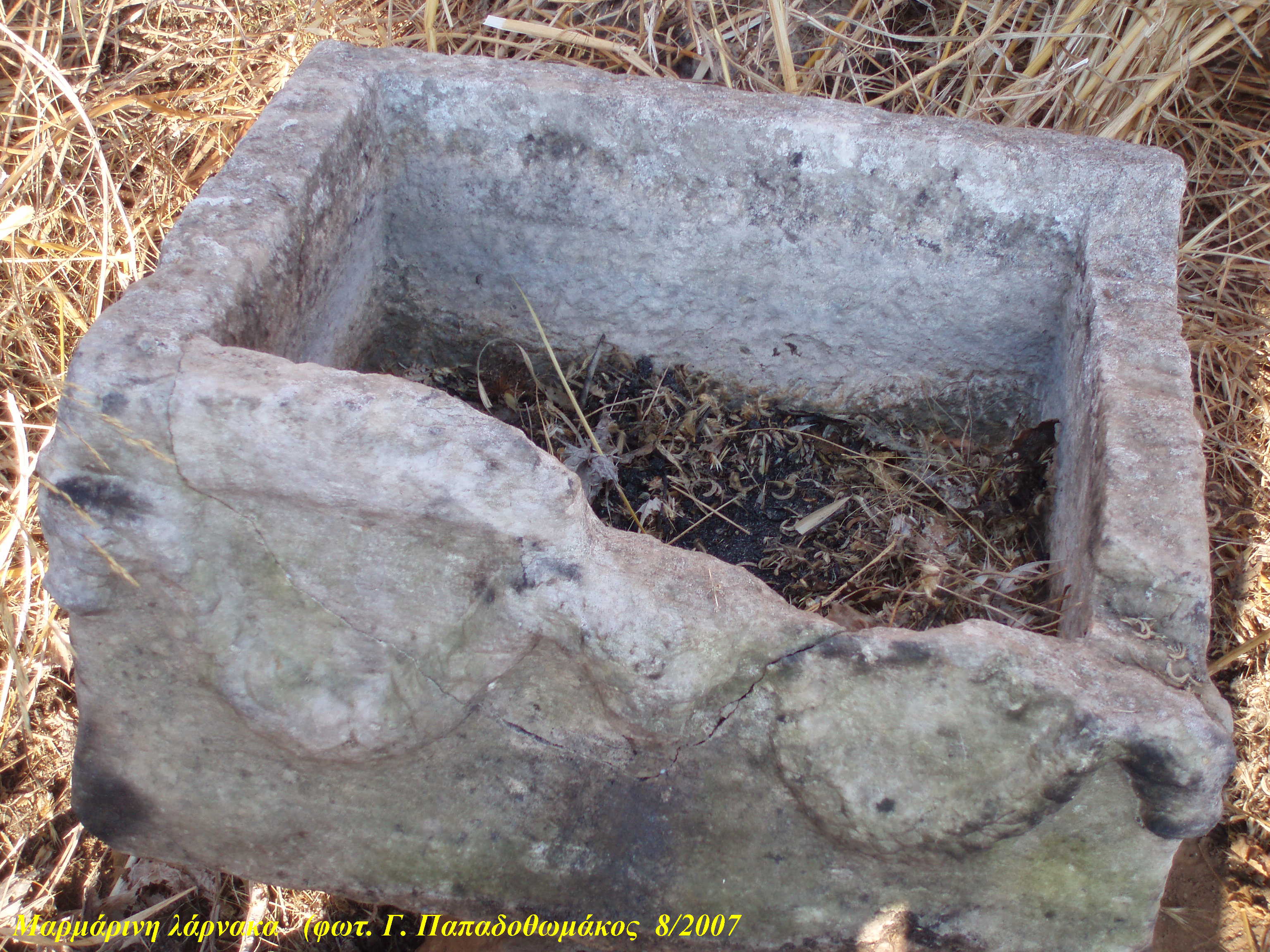Step 6 of 8Would you like to dive deeper into the topic?More information is available
Playing with clay
This larnax, like many others, is made of clay. When baked, it becomes terracotta. Clay was widely used for pottery in Aegean Greece, but clay coffins have a long tradition on the island of Crete as well. Because of its flexibility, the soft material can be shaped easily, but when sun-dried or baked, it becomes solid and firm. This makes it a great material for things like coffins.
You may wonder how such a large object was made and baked. If so, dive into the extension before moving on to the next step.
](https://micrio.thingsthattalk.net/sXDrC/views/max/128x128.jpg)

](https://micrio.thingsthattalk.net/TzTcv/views/max/128x128.jpg)
](https://micrio.thingsthattalk.net/pVklK/views/max/181x128.jpg)